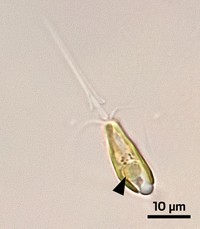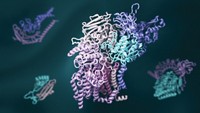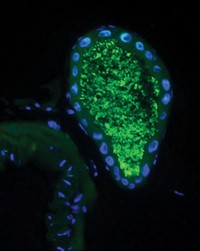Advertisement
Grab your lab coat. Let's get started
Welcome!
Welcome!
Create an account below to get 6 C&EN articles per month, receive newsletters and more - all free.
It seems this is your first time logging in online. Please enter the following information to continue.
As an ACS member you automatically get access to this site. All we need is few more details to create your reading experience.
Not you? Sign in with a different account.
Not you? Sign in with a different account.
ERROR 1
ERROR 1
ERROR 2
ERROR 2
ERROR 2
ERROR 2
ERROR 2
Password and Confirm password must match.
If you have an ACS member number, please enter it here so we can link this account to your membership. (optional)
ERROR 2
ACS values your privacy. By submitting your information, you are gaining access to C&EN and subscribing to our weekly newsletter. We use the information you provide to make your reading experience better, and we will never sell your data to third party members.
Biological Chemistry
PKZILLA proteins smash protein size limits
To make a giant molecule, nature devised a similarly giant solution
by Sarah Braner
August 8, 2024

A new paper in Science details the largest protein discovered to date.
The protein, dubbed PKZILLA-1 by the paper’s authors, comes from the haptophyte alga called Prymnesium parvum (2024, DOI: 10.1126/science.ado3290). Giant polyketide synthase genes found in P. parvum’s genome encode for a pair of massive proteins. PKZILLA-1 has a mass of 4.7 megadaltons and contains 140 enzyme domains, while its little sibling PKZILLA-2 has a mass of 3.2 megadaltons and contains 99 enzyme domains.
Before finding PKZILLA, scientists were already closely familiar with prymnesin-1, an infamous toxin produced by P. parvum. The toxin is responsible for killing hundreds of thousands of fish during algal blooms, most recently in 2022 in Europe’s River Oder. Apart from its potent toxicity, the molecule is also known for its size, with its backbone containing 91 carbons. While prymnesin-1’s toxicity and size are well established, it’s been unclear how these huge molecules are synthesized within the cell.
The proposed answer, according to Bradley Moore, a marine chemist at Scripps Institution of Oceanography and one of the authors of the new paper, is that “giants make giants.” The paper suggests that these PKZILLA proteins synthesize the backbone of prymnesin-1. It’s possible that it is not the most energetically favorable method to synthesize such a huge molecule—rather than have multiple smaller enzymes do it—but “for whatever reason, nature selected to evolve a protein of this size,” Moore says.
This discovery wasn’t entirely surprising. Uwe John, a researcher from the Alfred Wegener Institute for Polar and Marine Research who was not involved with the research, says that small parts of the giant synthase genes that make these proteins have been found previously but that “one very nice outcome of this publication is that [the researchers] find a good way to come to the full set.”
This discovery shows how big proteins can be. But Jon Clardy, a biological chemist at Harvard who was also not involved with the research, says that these PKZILLA proteins likely approach the upper size limits for proteins because of the sheer workload of expressing something that large.
“If you have a long pathway like that, a lot of things have to go right for something to come out at the end,” he said; adding a protein of this size is probably approaching the point of failure.





Join the conversation
Contact the reporter
Submit a Letter to the Editor for publication
Engage with us on Twitter